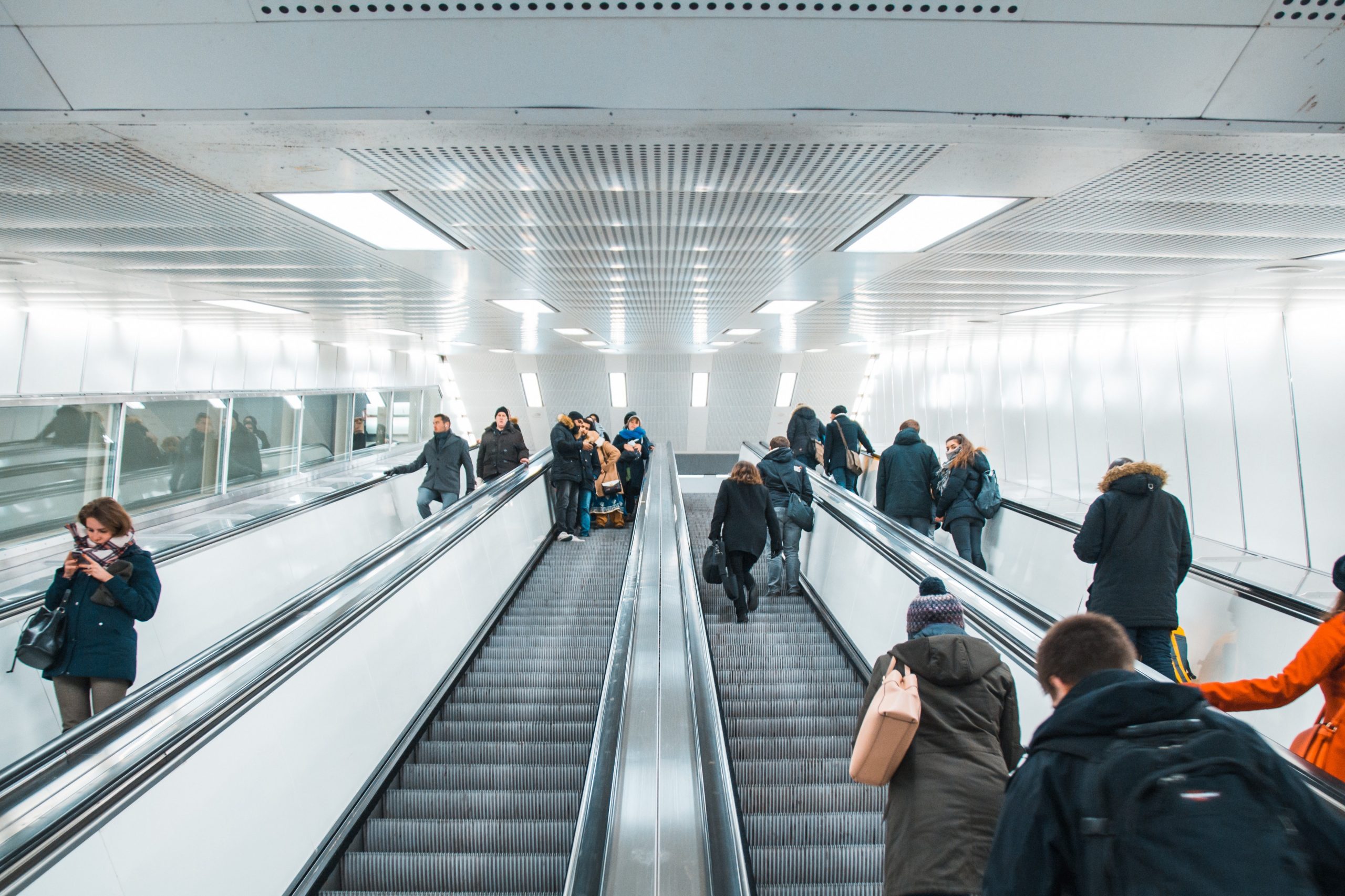What fat passengers need to know about domestic seat sizes, seatbelt lengths, and the maze of airlines? ?customer of size? policies.
 Photo by Jonathan Rautenberg on Unsplash
Photo by Jonathan Rautenberg on Unsplash
For me, flying while fat is an uneasy experience at best. I worry about being filmed or photographed, about passengers complaining, about being kicked off the flight, about being forced to buy a second seat, even when one isn?t available.
At a US size 26, my body occupies the larger end of the standard plus size spectrum, where many of these problems occur ? though I do not face the volume of challenges and open disdain aimed at people who wear extended plus sizes (usually US 30+).
There are countless stories about what happens when fat people dare to fly. Even after doing his research, Errol Narvaez was escorted off a plane in front of hundreds of watchful eyes, denied his flight home solely because of his size. Natalie Hage told off a man sitting next to her, who laughingly texted another person about how she must have ?eaten a Mexican.? Despite having made all the appropriate arrangements, Vilma Soltesz was denied flights home for days when she needed to get home for urgent medical care. Ultimately, three airlines failed her, and she died abroad, an ocean away from the health care she needed.
My flying anxiety isn?t just hypothetical, either. Strangers have loudly complained about me, with no intervention from other passengers. I have been photographed, whispered about, my body discussed openly in my presence. For reference, my worst experiences happened when I was a US size 30. As a US 26 now, those experiences have diminished a bit, but they are far from gone. People at the smaller end of the plus size spectrum are much likely to face issues with airline policies or being escorted from flights.
The average American is plus size, and fully two thirds of us are considered ?overweight? or ?obese.? Accommodating fat people on planes isn?t a niche issue ? it?s an immediate, widespread need. As such, I?ve compiled some resources for other very fat people in the US as part of the research so many of us do before flying.
?Customer of Size? policies (US Domestic Airlines)
Airline policies for so-called ?customers of size? vary from carrier to carrier, and change frequently and without warning, offering frustratingly little consistency.
Below are the policies for fat flyers at the nation?s most popular airlines, compiled in May, 2019. Follow links to ensure that you?re viewing the most recent policy for the airline you?re looking into. Note that, even where policies are clear, the flight crew may not be trained or experienced in implementing those policies, so any airline can be a gamble.
United Airlines. United (and its recently acquired subsidiary, Continental) may require that fat passengers buy a second seat and, if not purchased in advance, that passenger will be charged the day-of fair. If they decline to purchase an additional seat, United will refuse to board.
Southwest Airlines. Southwest offers fully refundable second seats that, unlike other airlines, may be booked online, without calling customer service to make special arrangements. If you don?t purchase a refundable second seat, an additional seat will be provided at no charge.
Alaska Airlines. Alaska and its smaller carrier, Horizon, both require the purchase of a second seat for any customer who cannot ?comfortably fit? in a seat with the armrests down. Refunds may be requested after travel is completed, and will only be granted if the flight was not otherwise sold out.
Delta Airlines. Delta does not require purchase of a second seat, but will move passengers if complaints are lodged. Second seats may be purchased online.
American Airlines. No policy currently published online. As of 2017, SkyScanner reported a convoluted policy ultimately requiring purchase of a second seat, which could only be completed by phone, not online.
Spirit Airlines. Spirit requires the purchase of a second seat for fat passengers and passengers with disabilities. Second seats may be purchased online.
Hawaiian Airlines. Hawaiian says it will ?try to find a suitable alternative? for passengers who are ?unable to sit comfortably in [their] seat with the armrests lowered.? If they cannot find a ?suitable alternative,? Hawaiian will decline to board & transport ticketed fat passengers. They do not mention refunds or alternate travel planning support.
Frontier Airlines. Frontier requires purchase of two seats prior to travel if they ?are unable to lower both armrests and/or [?] compromise any portion of adjacent seat or aisle.? Frontier does not mention whether seats may be refunded, whether passengers may denied boarding, or what constitutes ?compromising? additional space.
JetBlue. Jet Blue does not currently publish a policy, though it does allow passengers to purchase a second seat online. (On a personal note, JetBlue is the airline that has hosted my very worst experiences as a fat passenger.)
Allegiant Air. (Customer of size policy listed at the very bottom of the page.) Allegiant requires the purchase of a second seat for passengers ?who are unable to lower the armrest and/or compromise any portion of adjacent seat(s).? If a second seat isn?t purchased in advance, and an adjacent second seat isn?t available, Allegiant will deny boarding & transport for ticketed passengers.
Seatbelt Extenders
No airline policies currently require purchase of a second seat by passengers that request an extender, though several have in the past. If you?d prefer, you may purchase a seatbelt extender of your own through Amazon. Most extenders work for multiple airlines, though Southwest seatbelts require a special extender. Be careful to check for compatibility with your airline and aircraft of choice before purchasing an extender.
In a troubling twist, Runway Girl Network reports that seatbelt extenders may deactivate safety airbags, so passengers who use extenders may be at increased safety risk in the event of turbulence or an emergency landing.
Seat sizes, aisle widths & seatbelt lengths
Seat sizes are measured two ways: by pitch (a diagonal distance that measures legroom) and width (the distance from the inside of one armrest to the other). Both distances differ from airline to airline, plane to plane, and cabin to cabin. TripAdvisor?s Seat Guru website includes a detailed, helpful guide here.
Seatbelt lengths are significantly less consistent, and most airlines don?t currently post seatbelt lengths on their websites. According to TripSavvy, as of 2018, the shortest seatbelts were found on United Airlines, JetBlue and Delta. The longest seatbelts were on Hawaiian and Aeromxico.
The Federal Aviation Administration (FAA) regulates aisle size based on the number of passengers a given aircraft carries. For most commercial flights, the minimum aisle width is 15 inches (at two feet & below from the floor) and 20 inches above that. Beyond that regulated width, aisle size will vary from aircraft to aircraft.
Bathroom sizes
Airlines generally don?t provide information about the size of bathrooms, though measurements may be available for specific aircrafts. (Note: aircraft manufacturer and model are regularly provided during the booking process, so google may be helpful.
According to the Washington Post, however, major aircraft manufacturers are dramatically shrinking bathroom sizes on their newest planes. Measurements, details and images are available in their piece, Could you fit in this airplane bathroom?
History of Policy & Seat Size Changes
No, it?s not your imagination ? airline seats are shrinking over time. USA Today offers charts comparing seat width and pitch over the years, from airline to airline. While the specifics differ, on thing is a constant: every single airline has shrunk their seat width by at least two inches, and their seat pitch even more.
According to the New York Times, airlines plan to continue to shrink seats in every way they can. NPR agrees. Despite Congressional efforts to set a minimum seat size, in 2018, the FAA refused to regulate seat size.
Airline policies, too, change frequently, and often without fanfare. For comparison, here are some past ?customer of size? policy roundups from 2017, 2015 and 2012.
Legal Recourse Information
The Americans with Disabilities Act (ADA) does not currently apply to fat people unless we can prove a ?physical impairment,? according to the eight circuit court as of 2016. The Air Carriers Access Act, which regulates airline access for disabled people, does not have any size-related court rulings that I?ve been able to find.
Weight discrimination is perfectly legal in 49 states, so don?t expect to have straightforward legal recourse outside of Michigan. Should you decide to pursue legal action, you may be able to find a friendly attorney at the Health at Every Size Registry.
Of course, these resources don?t solve the fundamental problem facing fat passengers. The solution is for airlines to provide services that meet the needs of the bulk of their customers, and to adopt policies that include input from fat passengers. And, frankly, the solution is to stop shrinking airline seats and construct seats that accommodate the size passengers are today. But until that happens, fat passengers will be left to fend for ourselves.
If you?ve got more links to policies, or other information that should be included here, email me directly at yrfatfriend (at) gmail (dot) com. Please include sources ? ideally directly from airlines, from aircraft manufacturers, from the TSA/FAA, or from reputable travel blogs or news outlets.
Like this post? There are more like it. You can also find Your Fat Friend on Twitter, Instagram and Facebook.


